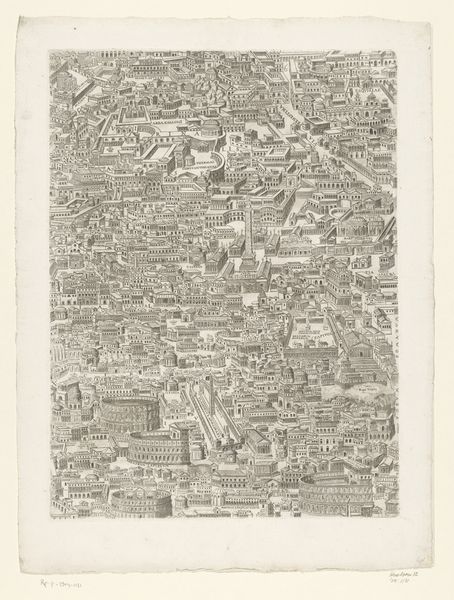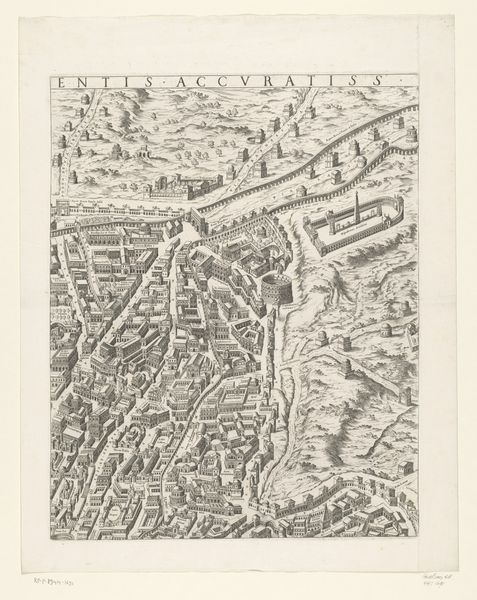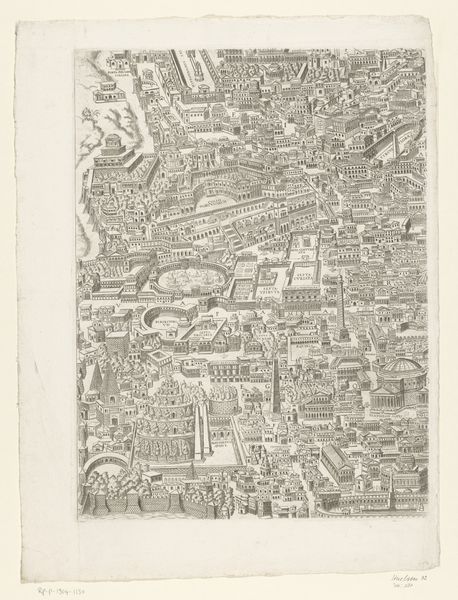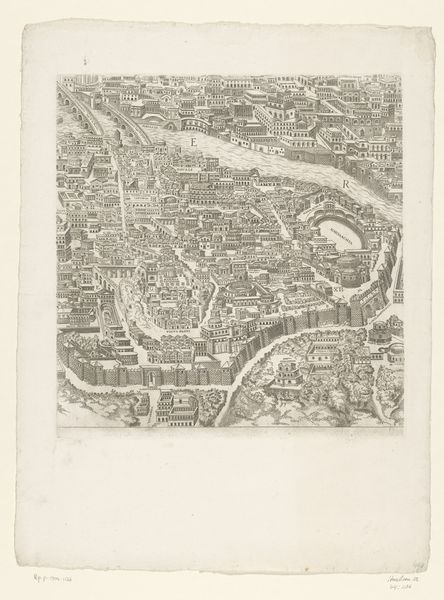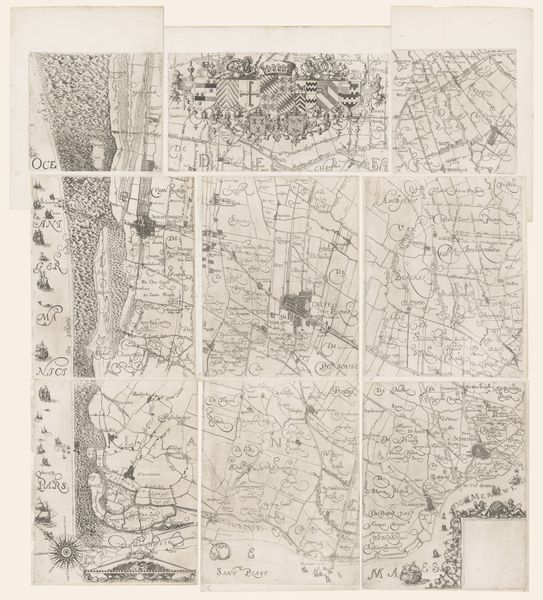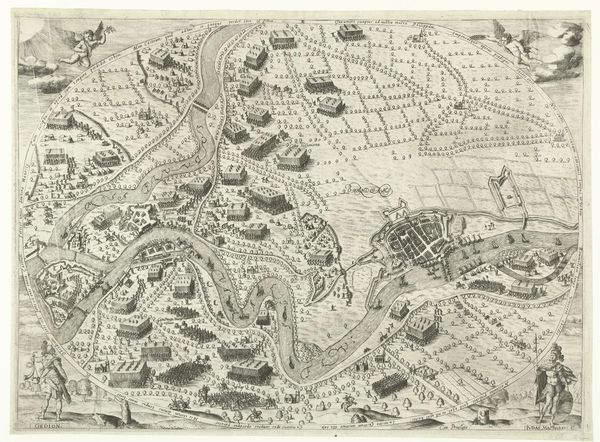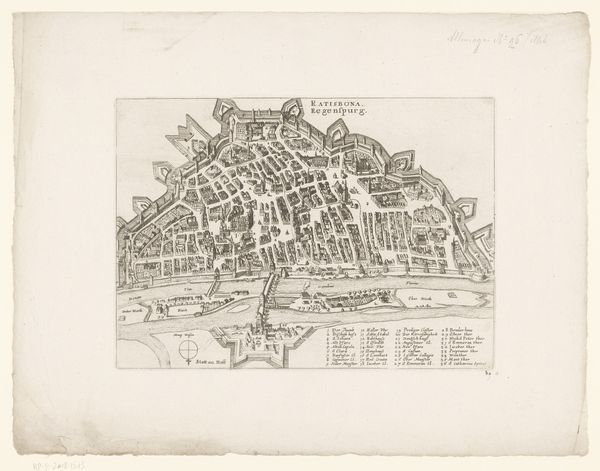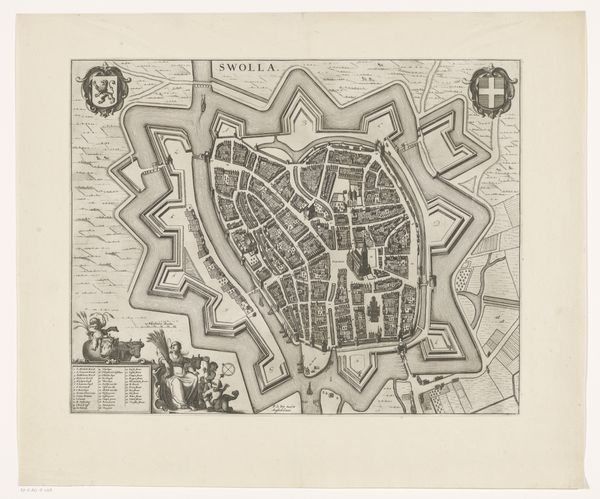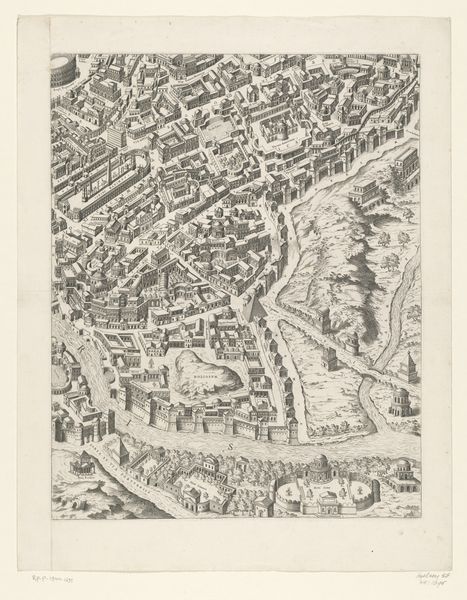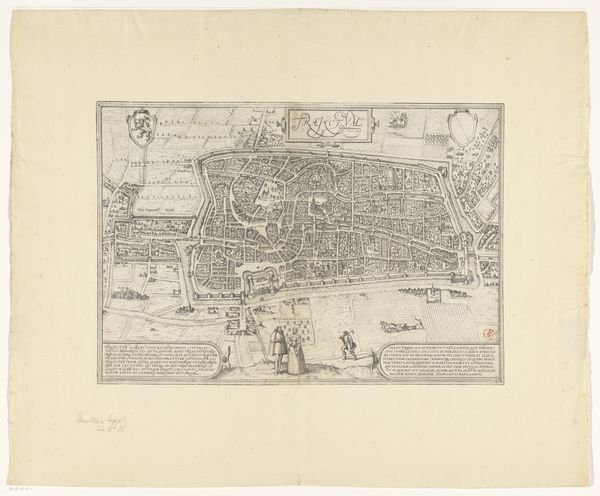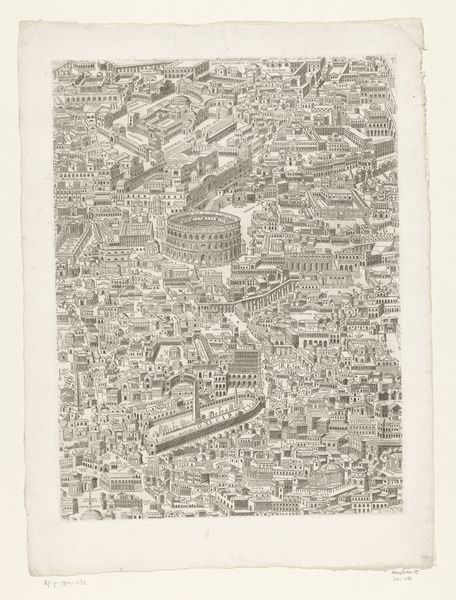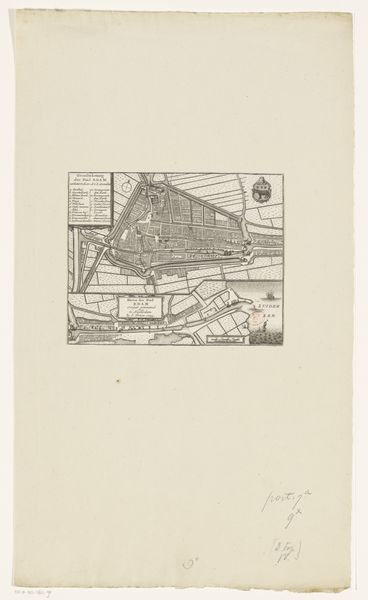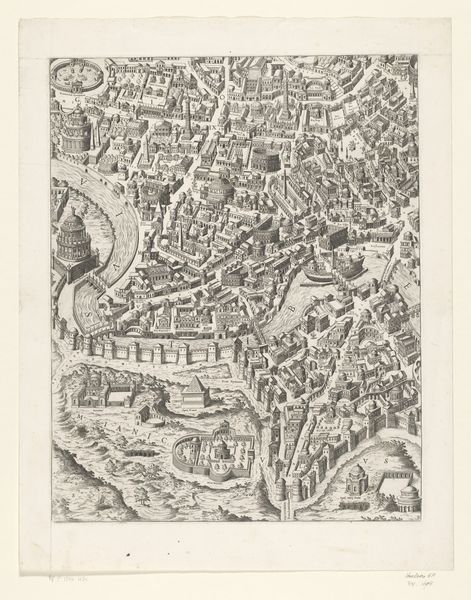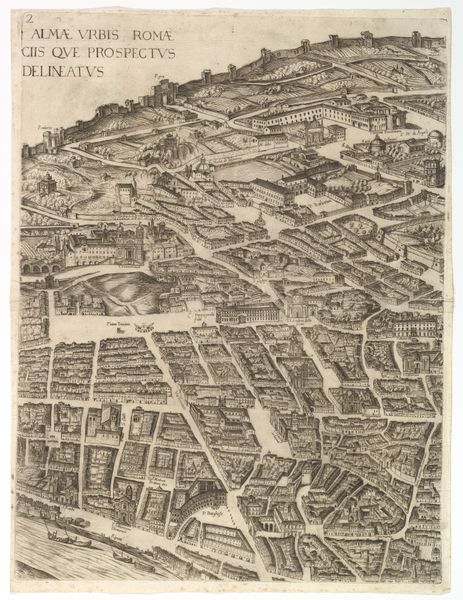
drawing, ink, engraving
#
drawing
#
neoclacissism
#
pen drawing
#
pen sketch
#
old engraving style
#
ink
#
geometric
#
ancient-mediterranean
#
cityscape
#
history-painting
#
engraving
Dimensions: height 496 mm, width 370 mm
Copyright: Rijks Museum: Open Domain
Editor: We’re looking at “Plattegrond van Rome in de Romeinse tijd (achtste deel),” or "Map of Rome in Roman Times, part eight," created around 1773 by an anonymous artist. It’s an intricate engraving made with ink, detailing a bird's-eye view of the ancient city. It feels like staring at a meticulously built ant farm! All those tiny structures. What do you see in this piece, beyond the impressive detail? Curator: For me, it whispers of ambition and imagination. Can you feel it? Look at the dedication in capturing every imagined street and building, all those hypothetical citizens milling about their hypothetical lives... the anonymous artist is almost like an ancient city planner, re-envisioning the heart of civilization through neoclassical ideals. It’s part historical document, part architectural fantasy, don't you think? It certainly lacks the ruin and decay you'd expect. Editor: That's fascinating – an architectural fantasy. I was so focused on the accuracy, I missed the reimagining aspect. Curator: Accuracy in historical depiction in that period walks a fine line with self-conscious romanticism. Doesn’t it remind you of those intricate architectural renderings they use to sell property developments? Now look at how the buildings relate. Are there wide, gracious boulevards? Imposing structures? Or a densely packed, sometimes chaotic feel? The details are key to unlocking our interpretation. Editor: I see your point! It’s definitely grand, with those towering monuments. It projects an idealized, almost utopian version of Rome. So, it's less about strict historical truth and more about conveying a sense of Roman power and order? Curator: Precisely! Perhaps it’s less a mirror and more… a collective dream of Roman glory? That makes it both a document of the time it depicts, and the time in which it was made! Editor: I’m seeing this piece in a totally different light now. It’s like the artist was selling a vision as much as documenting a place. Curator: Yes, and like any good advert, the truth is subtly and strategically embellished. Isn't that marvelous?
Comments
No comments
Be the first to comment and join the conversation on the ultimate creative platform.
